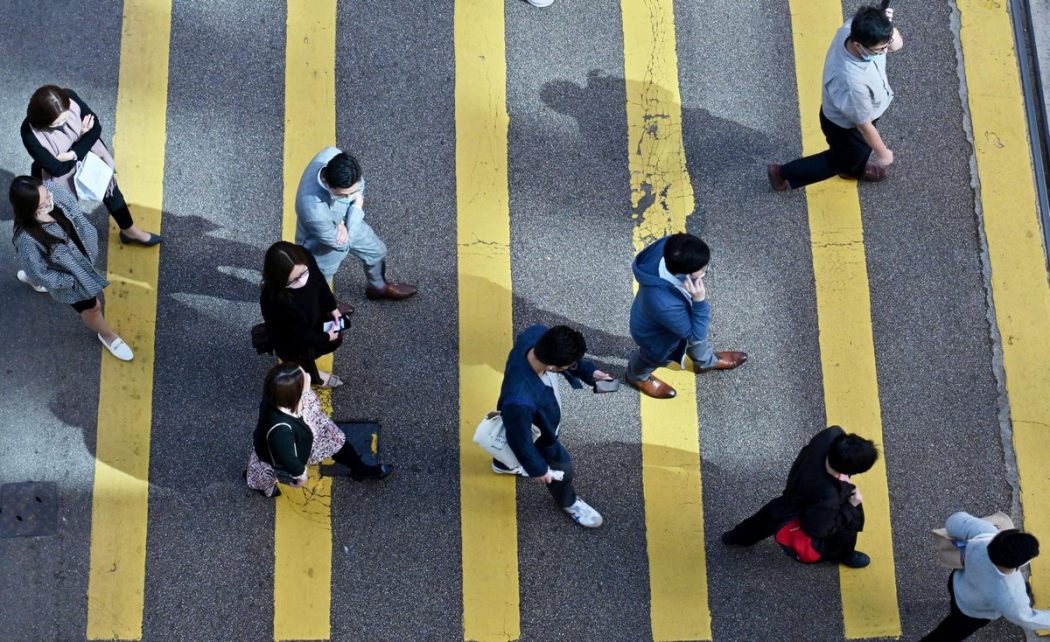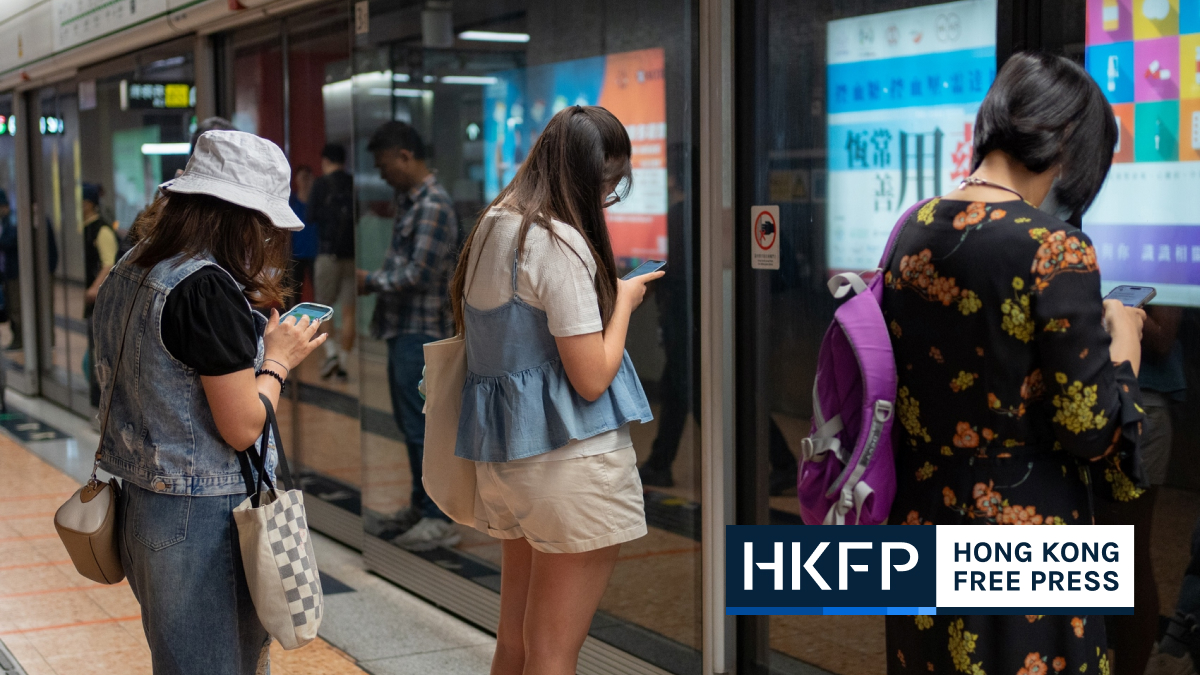Hong Kong’s population fell by 0.9 per cent in 2022, according to provisional statistics from the Census and Statistics Department. It is the third consecutive year in which the population has fallen.
The number of residents shrank by 68,300 to 7,333,200 last year, amid an exodus of workers and a falling birth rate.

Authorities say there was a net outflow of 38,800 since 21,200 one-way permit holders from China arrived in the territory, and 60,000 residents left.
“Amidst the continued impact of COVID-19, cross-boundary travel has been interrupted. It is observed that the inflow of people into Hong Kong has remained at a low level for most of the time in 2022 before seeing a slight rebound near the end of 2022, subsequent to the gradual relaxation of anti-epidemic control measures,” a government spokesperson said in a Thursday press release.
“It is believed that the epidemic would have impacted talent inflow, especially those on short-term employment visas/entry permits. We noticed that the population decrease in the second half of 2022 has narrowed when compared to that in the first half, reflecting that movement of the Hong Kong population has begun to resume normal gradually,” they said, adding that the economy should return to normalcy as Covid-19 restrictions are dropped and measures to attract talent are rolled out.
Hong Kong has among the lowest birth rates in Asian economies, according to the census department.
Population figures from mid-2011 to end-2022
| Year | Usual Residents | Mobile Residents | HK Resident Population | Usual Residents | Mobile Residents | HK Resident Population |
|---|---|---|---|---|---|---|
| 2011 | 6 859 400 (+ 0.7%) | 212 200 (+ 1.4%) | 7 071 600 (+ 0.7%) | 6 886 800 (+ 0.8%) | 222 700 (+ 1.4%) | 7 109 500 (+ 0.8%) |
| 2012 | 6 934 300 (+ 1.1%) | 215 800 (+ 1.7%) | 7 150 100 (+ 1.1%) | 6 949 700 (+ 0.9%) | 221 300 (- 0.7%) | 7 171 000 (+ 0.9%) |
| 2013 | 6 966 700 (+ 0.5%) | 212 200 (- 1.7%) | 7 178 900 (+ 0.4%) | 6 986 200 (+ 0.5%) | 224 700 (+ 1.5%) | 7 210 900 (+ 0.6%) |
| 2014 | 7 013 500 (+ 0.7%) | 216 000 (+ 1.8%) | 7 229 500 (+ 0.7%) | 7 022 600 (+ 0.5%) | 230 300 (+ 2.5%) | 7 252 900 (+ 0.6%) |
| 2015 | 7 071 900 (+ 0.8%) | 219 400 (+ 1.6%) | 7 291 300 (+ 0.9%) | 7 079 800 (+ 0.8%) | 229 900 (- 0.2%) | 7 309 700 (+ 0.8%) |
| 2016 | 7 116 800 (+ 0.6%) | 219 800 (+ 0.2%) | 7 336 600 (+ 0.6%) | 7 147 400 (+ 1.0%) | 230 700 (+ 0.4%) | 7 378 100 (+ 0.9%) |
| 2017 | 7 174 300 (+ 0.8%) | 218 900 (- 0.4%) | 7 393 200 (+ 0.8%) | 7 183 100 (+ 0.5%) | 231 700 (+ 0.4%) | 7 414 800 (+ 0.5%) |
| 2018 | 7 229 400 (+ 0.8%) | 223 200 (+ 2.0%) | 7 452 600 (+ 0.8%) | 7 259 200 (+ 1.1%) | 228 500 (- 1.4%) | 7 487 700 (+ 1.0%) |
| 2019 | 7 311 900 (+ 1.1%) | 196 000 (-12.2%) | 7 507 900 (+ 0.7%) | 7 365 000 (+ 1.5%) | 155 500 (- 31.9%) | 7 520 500 (+ 0.4%) |
| 2020 | 7 390 800 (+ 1.1%) | 90 200 (- 54.0%) | 7 481 000 (- 0.4%) | 7 341 000 (- 0.3%) | 85 700 (- 44.9%) | 7 426 700 (- 1.2%) |
| 2021 | 7 334 700 (- 0.8%) | 78 400 (- 13.1%) | 7 413 100 (- 0.9%) | 7 289 600 (- 0.7%) | 111 900 (+ 30.5%) | 7 401 500 (- 0.3%) |
| 2022 | 7 194 600* (- 1.9%*) | 151 500* (+ 93.2%*) | 7 346 100* (- 0.9%*) | 7 197 200# (- 1.3%#) | 136 000# (+ 21.5%#) | 7 333 200# (- 0.9%#) |
Who is considered a “usual” or “mobile” resident of Hong Kong – click to view.
According to the Census and Statistics Department:
“Usual Residents” refer to two categories of people: (1) Hong Kong Permanent Residents who have stayed in Hong Kong for at least three months during the six months before or for at least three months during the six months after the reference time-point, regardless of whether they are in Hong Kong or not at the reference time-point; and (2) Hong Kong Non-permanent Residents who are in Hong Kong at the reference time-point.
For those Hong Kong Permanent Residents who are not “Usual Residents”, they are classified as “Mobile Residents” if they have stayed in Hong Kong for at least one month but less than three months during the six months before or for at least one month but less than three months during the six months after the reference time-point, regardless of whether they are in Hong Kong or not at the reference time-point.
Last year, 32,500 babies were born, as deaths rose to 62,100. In 2019, before the Covid-19 pandemic, there were 52,900 births and 49,000 deaths.
The city saw its largest mid-year population decline ever in 2022, according to official statistics. The exodus is being felt across industries from banking to education. Government figures show that over 4,000 teachers left their jobs in the past school year, a five-year high and a 70 percent spike from the year before.
Talent attraction schemes
With no official figures on whether departures from the city are permanent, it is difficult to measure the extent of brain drain upon the city. Student vacancies at schools, applications from UK British National (Overseas) (BNO) passports, and the withdrawal of pension funds have all seen an uptick.
See also: Explainer: How to measure Hong Kong’s mass exodus
To combat the exodus of talent, Chief Executive John Lee unveiled a number of measures last October. A new two-year “Top Talent Pass Scheme” aims to entice talent to pursue careers in Hong Kong – applicants will not be obliged to have secured a job offer before arriving in the city. The programme is aimed at high-earners, as well as recent graduates from the world’s top 100 universities with some work experience.

Meanwhile, the government has launched the Office for Attracting Strategic Enterprises to lure firms to Hong Kong with land and tax incentives, with a focus on industries of “strategic importance” including financial technology, as well as life and health technology.
Lee has otherwise rejected the use of the term “emigration wave” to describe Hong Kong’s declining population. He said the city had long seen people “shuttling in and out,” and that residents leave for a variety of factors, including education and family reasons.
Support HKFP | Policies & Ethics | Error/typo? | Contact Us | Newsletter | Transparency & Annual Report | Apps
Help safeguard press freedom & keep HKFP free for all readers by supporting our team

LATEST FROM HKFP
HKFP has an impartial stance, transparent funding, and balanced coverage guided by an Ethics Code and Corrections Policy.
Support press freedom & help us surpass 1,000 monthly Patrons: 100% independent, governed by an ethics code & not-for-profit.










